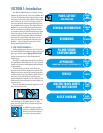
7
20
Hz
100
Hz
1k
Hz
10k
Hz
20k
Hz
–15
–10
–5
0
+5
+10
+15
20
Hz
100
Hz
1k
Hz
10k
Hz
20k
Hz
–15
–10
–5
0
+5
+10
+15
20
Hz
100
Hz
1k
Hz
10k
Hz
20k
Hz
–15
–10
–5
0
+5
+10
+15
20
Hz
100
Hz
1k
Hz
10k
Hz
20k
Hz
–15
–10
–5
0
+5
+10
+15
20
Hz
100
Hz
1k
Hz
10k
Hz
20k
Hz
–15
–10
–5
0
+5
+10
+15
20
Hz
100
Hz
1k
Hz
10k
Hz
20k
Hz
–15
–10
–5
0
+5
+10
+15
MIX-B
CHANNEL
PRE
SHIFT
SOURCE
12k
EQ
LOW CUT
EQ IN
LO
MID
HI
HI
MID
FREQ
75 Hz
18dB/oct
45 3k
BAND
WIDTH
OCTAVES
500 18k
3k
FREQ
–15 +15
80
U
LO
–15 +15
U
–15 +15
U
–15 +15
U
1k 5 k
250
220 350
3
2
1
12
NORMAL
16
Freq. center: 1k;
Bandwidth: 3-octave;
±15dB boost/cut
Freq. center: 1k;
Bandwidth: 1-octave;
±15dB boost/cut
Freq.: 500Hz-18kHz sweep;
Bandwidth: 1-octave;
±15dB boost/cut
Freq. center: 1k;
Bandwidth: 1/12-octave;
±15dB boost/cut
Freq.: 500Hz-18kHz sweep;
Bandwidth: 1/12-octave;
±15dB boost/cut
When you put these consoles on
the test bench, you see that the
bandwidth of their EQ is sim-
ply too narrow — often
around one octave. This is OK
for extreme adjustments in
live situations, but that’s about
it. It’s just not wide enough to
gently alter the multiple oc-
taves that voices and
instruments span.
This is just
the opposite
of “classic”
big-studio
consoles.
Their EQ (including Hi Mid) can
be adjusted to be extremely
broad — three or more octaves
wide in many cases. When you
apply this wideband EQ, it
sounds far more “sweet” and
“natural.” Changes sound so
gradual and smooth that you can
add considerably more EQ than
would ever be possible with nar-
rower-band consoles, yet without
compromising the overall sound.
On the other hand, ultra-nar-
row-band EQ also has its place,
both as a corrective tool and for
special effects. So why not give
you even tighter control than
would be possible with a 1/3-oc-
tave graphic equalizer? Thus was
born the 8•Bus’ 1/12-octave to 3-
octave width range.
At this point, as we played
around with the Bandwidth and
Boost/Cut controls using actual
music, we realized that to limit
this circuit to just Hi Mid (typi-
cally above 2.5kHz) would
actually limit its usefulness. The
flexibility that true parametric
control provides is nice to have in
the octaves below the Hi Mid re-
gion as well. So we came up with
what is probably the first console
Hi Mid control that can be swept
all the way down to 500Hz. If Hi
Mid doesn’t do it for you as a
name, think of these three
controls as the Roving-
Parametric-Problem-Solver-O-Matic.
O-Rama.
MIX-B SPLIT
The SPLIT switch (14) in the
MIX-B section splits the EQ sec-
tion of the channel when
depressed. In the up position, all
four sections of EQ remain, if en-
gaged, in the primary channel
signal path feeding the channel
fader and the 8-plus-2 buses. In
this mode there is no equalization
in the MIX-B path.
When the SPLIT switch is de-
pressed, the HI and LO shelving
sections of the EQ are removed
from the channel signal and in-
serted into the MIX-B signal
path. The HI-MID and LO-MID
parametric sections of the EQ re-
main, if engaged, in the channel
signal path.
The SPLIT function allows you to
EQ the channel’s signal and its MIX-
B signal separately.
NOTE: When the EQ is split, the
main EQ IN/OUT switch only
switches the channel signal’s para-
metric sections. It does not affect
the shelving sections split to MIX-B.
EQ SECTION
Each 8•Bus channel strip equal-
izer section has four bands (HI MID,
LO MID, LO, and HI) plus a low-cut
filter. The equalizer can be split be-
tween main channel signal and
MIX-B signal.
HI MID EQ
The HI MID EQ section (15) is a
true 3-control parametric design, of-
fering: A) bandwidth variable from 3
octaves to 1/12 octave (16); B) ±
15dB of equalization (17) and; C)
variable frequency center from
500Hz to 18kHz (18).
We spent a lot of time on this
part of the 8•Bus Series’ EQ. One
of the things we’ve always noticed
about lower-priced consoles was
how “drastic” their Hi Mid EQ
sounded. Even a little boost could
induce honkiness and nasality.
Frankly, Hi Mid EQ on many
boards is not that useful in studio
applications for just this reason.
Freq.: 500Hz-18kHz sweep;
Bandwidth: 3-octave;
±15dB boost/cut


















